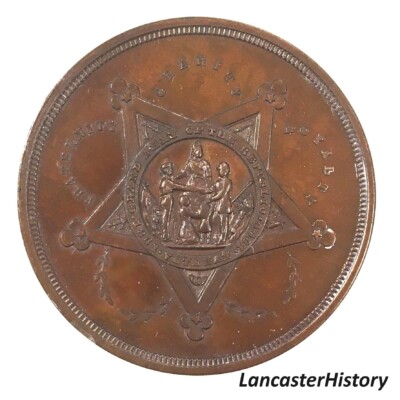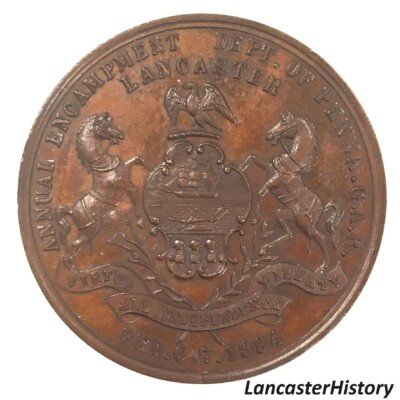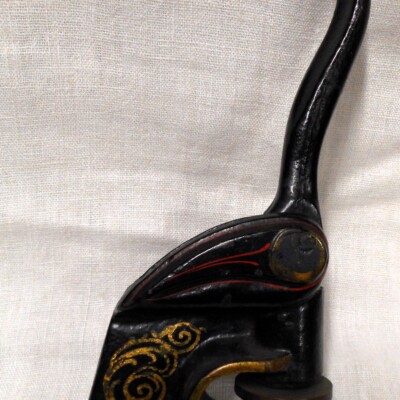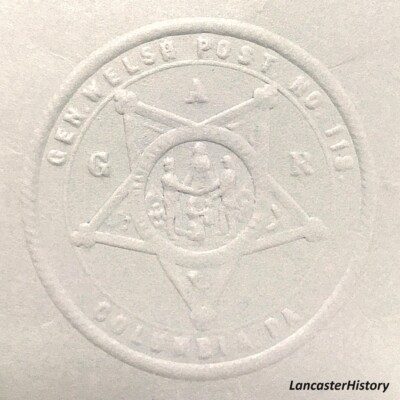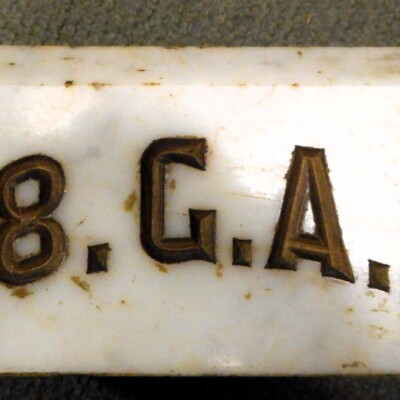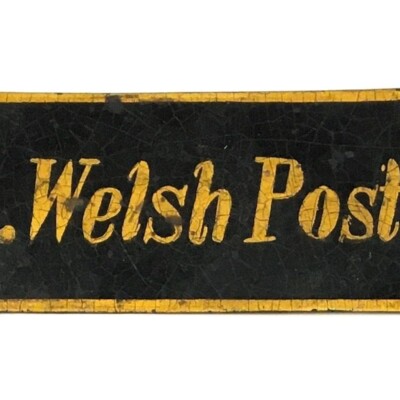The Mystery of the Cannon Ballot Box
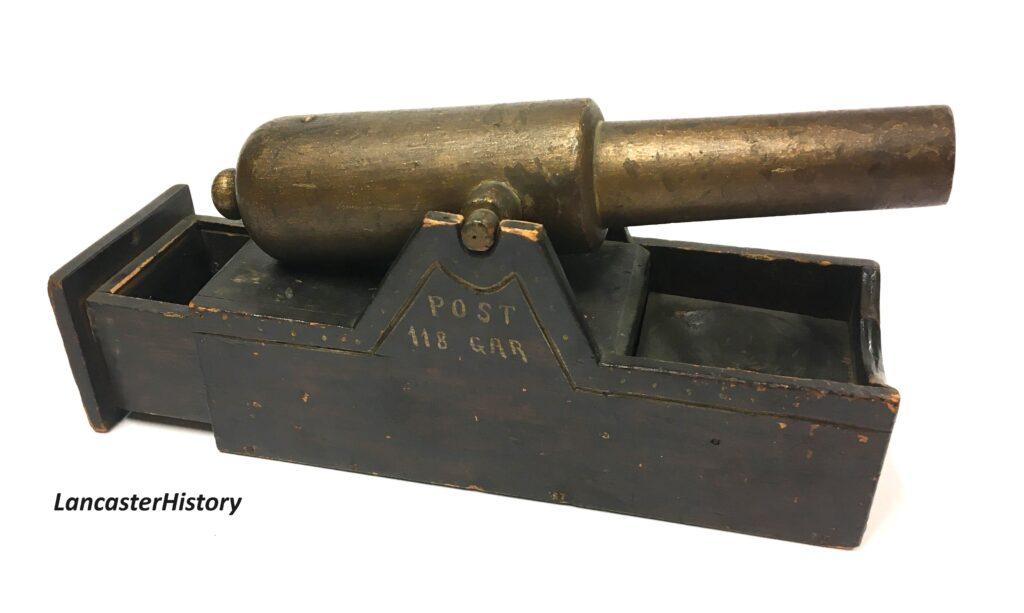
The recent installation of a high density storage system in the Decorative Arts Center has necessitated a detailed inventory of objects to update locations. During the inventory process we have rediscovered a number of interesting objects that cause us to pause and take a moment to ask questions and conduct a little more research. One such item that recently piqued our interest is this miniature wooden cannon set on a wooden carriage and marked “POST 118 GAR.”
What was the GAR?
The Grand Army of the Republic (usually abbreviated GAR or G.A.R.) formed in 1866 as a fraternal veterans’ group open to honorably discharged service members of the Union Army, Navy, Marine Corps or Revenue Cutter Service who served during the American Civil War (1861-1865). The GAR worked to better the lives of veterans and to preserve the memory of those who fought in the war. The organization consisted of departments organized along state lines and consecutively numbered local posts within each department. Most posts were also named in honor of a deceased individual. Today, the GAR might be best remembered for establishing May 30 as Decoration Day; a day for remembering those soldiers who died in battle by decorating their graves with flowers. Today, Decoration Day is now observed as Memorial Day, a federal holiday held the last Monday in May to mourn and honor all deceased servicemen and servicewomen.
The GAR held national encampments or reunions each year beginning in 1866. Both the first and the last in 1949 were held in Indianapolis, Indiana. The organization was dissolved in 1956 after Albert Woolson, its last member, died. The organization and its records were then transferred to the Library of Congress. The Smithsonian Institution became the repository for objects such as badges, flags, and the official seal of the organization. Various local organizations cared for items associated with local posts upon their demise. Today, the Sons of Union Veterans of the Civil War (SUVCW) carry on the work of preserving the history and legacy of Union veterans of the Civil War.
Click on each image to view at full-size.
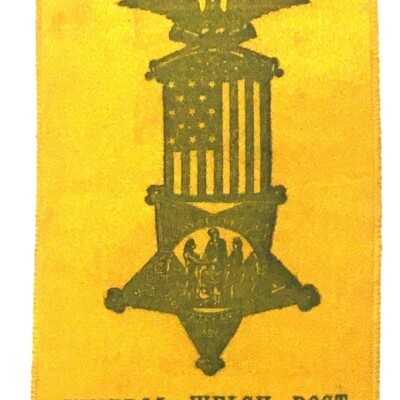
What was GAR Post #118?
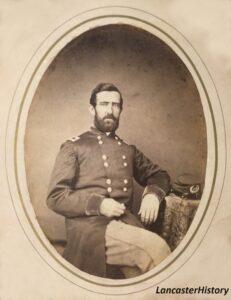
Following creation of the Department of Pennsylvania of the Grand Army of the Republic in 1866, local posts quickly organized throughout the state. The first post in Lancaster County (and the only post in the county that still exists) was created in 1867 as the George H. Thomas Post #84 in the city of Lancaster. The second post in the county was formed on March 21, 1868 in Columbia, the only community in the county directly attacked by Confederate forces. Named in honor of a native son of the town, the General Thomas Welsh Post #118 first met in what was then known as the GAR Hall at 139 Locust Street. By 1882, the post had moved to the Odd Fellows Hall at 200 Locust Street.
General Welsh served in the Mexican War and during the Civil War commanded the 1st Division of General Burnside’s IX Corps in support of General Grant’s Vicksburg campaign. Soon after, Welsh contracted malaria and died on August 14, 1863. He is buried in Mount Bethel Cemetery, Columbia. For more information on General Welsh see the following blog on the LancasterHistory webpage: General Thomas Welsh: County Native, Devoted Father and Husband, Respected Soldier.
An entry for Post #118 in The History of Lancaster County, Pennsylvania by Ellis and Evans (1883) provided the following assessment:
Gen. Welsh Post is one of the strongest, numerically and financially, and one of the best organized and successfully conducted posts in the interior of the State. Its muster-roll contains nearly three hundred names, comprising many of the leading citizens of Columbia, including merchants, members of the different professions, skilled mechanics, numerous employees and officers of the Pennsylvania Railroad Company, and farmers from the suburban districts. It is an organization which very fairly represents the character, patriotism, and intelligence of our citizen soldiery, commanding the respect and enjoying the confidence and sympathy of the community.
The post controls a beautiful lot of ground in Mount Bethel Cemetery, where soldiers, dying without friends, are buried. It annually observes Memorial Day with solemn and appropriate services. The post owns a valuable sciopticon [projector] and dissolving views, used in the illustration of its ritual; has a large and well organized drum corps, and is now negotiating for a more convenient and suitable post-room.
Despite this rather rosy assessment of the post, good times would not continue, and the post would disband on November 22, 1933. A number of objects belonging to the post were entrusted to the care of the Columbia American Legion Post 372, which donated these items to the Lancaster County Historical Society (now LancasterHistory) in 1995. The donation included the cannon ballot box, seal press, gavel block, and small sign.
Click on each image to view at full-size.
Cannon Ballot Box – The Swamp Angel
Although the legend “Swamp Angel” does not appear on the Post #118 ballot box, it often appears on similar boxes used by posts throughout the country. The design of the ballot box is based upon the artillery gun and carriage used by Major General Quincy A. Gilmore to capture the city of Charleston, South Carolina in 1863. The gun was placed on a very swampy area of Morris Island in Charleston Harbor – hence the term “Swamp Angel.” To prepare the area for the large gun, thirteen thousand sandbags weighing more than eight hundred tons were used to create a firm foundation. Although the artillery piece would fail after firing thirty-six shots, the piece accomplished a number of military firsts. The Swamp Angel is considered to be the first artillery piece to be fired using a compass reading and the first to bombard a civilian center in the hope of achieving a military end. Shells fired by the artillery piece also traveled further than those used in any previous military bombardment.
When voting, post members would choose either a black or white ball from the cup below the muzzle of the cannon. The ball was then deposited in the muzzle of the gun that would pass through a hole in the breech of the gun before falling into a drawer below. The officer in charge of the vote would then check the color of the balls in the drawer and announce the outcome. The balls would then be returned to the front of the gun carriage.
I’m always amazed what an unusual object with an intriguing inscription coupled with a little research can teach us about local and national history. And that’s really what museums are all about, isn’t it?
From Object Lessons
